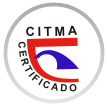Proposal for thecnological improvement for the recovery of crude oil and oily waste at Cienfuegos S.A Refinery
Abstract
Translator
At the Cienfuegos S.A Refinery, there is a high level of hydrocarbons and oily residuals that are drained or lost to the Waste Treatment Plant without being recovered, which influences the high production and energy costs, as well as the impact environmental with the dumping of its waste. It is known that in this refinery there are no technological conditions that allow the recovery and incorporation of the recovered crude oil into the process. In this sense, the objective of this study is to evaluate technically-economically and environmentally the proposal for the rehabilitation of tower T-01-105 for processing recovered oil at the Cienfuegos S.A. Refinery, thereby reducing production costs and the environmental impact. To achieve a comprehensive evaluation of the technological improvement proposal, a methodology is worked on to demonstrate the feasibility of the proposal. As a result, a simulation model is obtained with the PetroSim software that allowed the operating parameters of said tower to be obtained and the technical feasibility of the proposal is demonstrated. The dynamic indicators of profitability are determined NPV=3 828 172,20 CUP and IRR= 67%, with a PRI of 2,8 years, which demonstrate its sustainability. Finally, the conclusions respond to the objectives set and validate the work hypothesis, while the recommendations will allow the generalization of the results achieved.
References
2. ARIAS−LAFARGUE T, ALVAREZ−MONIER E, BESSY−HORRUITINER T, CÓRDOVA−RODRÍGUEZ V, RODRÍGUEZ−HEREDIA D. Valoración del estado del sistema de tratamiento de residuales líquidos de una refinería de petróleo. Revista Tecnología Química. 2022, 42 (1), pp. 193-195. ISSN: 2224-6185. https://tecnologiaquímica.uo.edu.cu
3. LOBELLES SARDIÑAS G.O y DEBORA-MIRA L. Propuesta de despojador cáustico para reducir emisiones gaseosas en la recuperación de azufre en Refinería Cienfuegos S.A. Revista Tecnología Química. 2021, 41(3), 504-521. ISSN: 2224-6185. https://tecnologiaquímica.uo.edu.cu
4. BAKER, H. Energy Global. [Online] 04 03, 2014. [Cited: 12 22, 2014.] Baker_Hughes_TRETOLITE_fluids_separation_technologies_celebrates_100_years.aspx. http://www.energyglobal.com/news/drilling-and-production/articles/
5. EPICORP. Egyptian Petroleum Investments Corporation. Oil refinery waste products concerns and management. 2022. https://epicorp.com.eg
6. LOBELLES-SARDIÑAS G.O; LÓPEZ-BASTIDA E.; CORTES-MARTINEZ R; PEDRAZA-GARCIGA J. Economía ecológica y gestión tecnológica integral de aguas sulfurosas en la refinería de Cienfuegos para minimizar emisiones. Revista Tecnología Química. 2019, 39 (1), 22-43. ISSN: 2224-6185. https://tecnologiaquímica.uo.edu.cu.
7. KBC.ADVANCED-TECHNOLOGIES. Petro-SIM™ 6.1 Process Simulator. Petro-SIM y Profimatics es una marca registrada de KBC Advanced Technologies. United Kingdom Oil & Gas news in Europe, 2004. www.kbcat.com.
8. NOGUERA BULMARO A. Pipephase es un software comercial de simulación orientado a la industria de los hidrocarburos y diseño de líneas de tuberías. Ingenieria Química Reviews (IQR). 2020. https://www.ingenieriaquimicareviews.
9. FELIU, J. A. Importancia de la termodinámica en la simulación de procesos. Revista Ingeniería Química, 2006,.438, 111-117. ISSN 0210-2064. Dialnet. https://dialnet.unirioja.es
10. LOPEZ ECHEVERRY J.S; REIF ACHERMAN S; and ARAUJO LOPEZ E. Peng Robinson equation of state: 40 years though cubics. ELSERVIER. Fluid Phase Equilibria. 2017. 447, 39−71. https://doi.org/10.1016/j.fluid.
11. PETERS, M. and TIMMERHAUS, K. Plant Desing and Economics for Chemical Engineers. McGraw-Hill International Editions. Fourth Edition. Chemical and Petroleum Engineering Series. 1991. pp:183 211.
12. COUPER, JR.; HERTZ, DW.; LEE SMITH, F. Process Economics. In Perry’s chemical engineers handbook, 8th edition. 2008. section 9, table 9-9 and equation 9.3
13. FARRAR, G. Quarterly Costimating: Indexes for selected equipament items. (E. Perspective, Ed.) Oil and Journal Digital Megazine. Retrieved Diciembre 21, 2022, from http://www.ogj.com
14. CEPAL-SEMARNAT. Evaluación de extarnalidades ambientales del sector Energía en las zonas críticas de Tula y Salamanca. México. CEPAL-SEMARNAT, 2007. LC/MEX/L.788/Rev.1. 11 de septiembre
This work is licensed under the Creative Commons Attribution-NonCommercial.
![]()













 Universidad de Oriente
Universidad de Oriente 